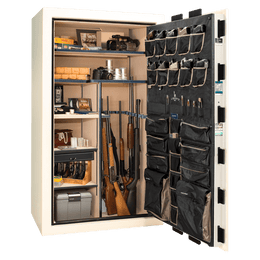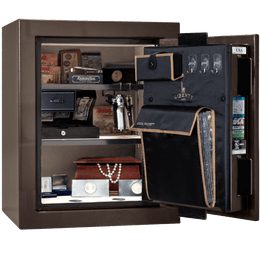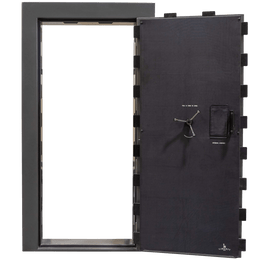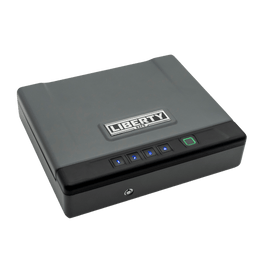Modern Protection for Your Most Valued Possessions
In an increasingly connected world, homeowners are embracing smart technology to enhance security and convenience. From video doorbells to automated lighting, these systems provide real-time awareness and control. But what about the cornerstone of your physical security—your safe? Integrating a robust, high-quality safe with your smart home network creates a formidable, multi-layered defense system for your most important valuables, documents, and firearms.
A connected safe isn't about replacing proven, physical security with flashy tech. Instead, it's about augmenting the trusted strength of steel and advanced locking mechanisms with the digital intelligence of modern security. This fusion provides unparalleled peace of mind, ensuring you're the first to know about any unauthorized interaction with your safe.
Why Connect Your Safe to a Security System?
The primary benefit of security system integration is instant notification. While a premier safe is your first line of defense against theft and fire, adding smart sensors provides immediate alerts about potential threats, giving you critical time to react and notify authorities. This approach combines preventative strength with proactive monitoring.
- Real-Time Alerts: Receive notifications directly to your smartphone if your safe is moved, tampered with, or opened unexpectedly.
- Layered Security: Your home alarm might detect an intruder, but a sensor on your safe confirms exactly what they are targeting.
- Deterrence: A connected system can trigger alarms, turn on lights, or activate cameras, potentially scaring off a would-be thief before they can attempt to breach the safe.
- Environmental Monitoring: Some sensors can even alert you to changes in temperature or humidity, providing an extra layer of protection for sensitive items.
How to Achieve Smart Home Safe Integration
Integrating your safe is simpler than you might think. It doesn't require complex modifications that could compromise your safe's integrity. The process revolves around using widely available, non-invasive smart sensors that communicate with your existing smart home hub (like those from Ring, SimpliSafe, Google Home, or Amazon Alexa).
Step 1: Choose the Right Sensors
The most effective sensors for safes are vibration sensors and contact sensors.
Vibration Sensors: These devices detect shock and movement. You can place one directly on or inside your safe. If a thief tries to pry, drill, or move the safe, the sensor will trigger an alert.
Contact Sensors: Typically used for doors and windows, these two-piece sensors can be placed on the safe's door and frame. If the door is opened, the connection between the sensors is broken, triggering an alarm. This is ideal for monitoring access, authorized or not.
Step 2: Connect to Your Smart Hub
Once your sensor is in place, you’ll pair it with your smart home security system via its mobile app. The process is usually straightforward, involving scanning a QR code or putting the hub in discovery mode. This links the sensor's status to your central security network.
Step 3: Configure Your Alerts and Automations
This is where you customize your response. Through your security system's app, you can set rules. For example: "If the safe's vibration sensor is triggered, then send a push notification to my phone, sound the main alarm, and turn on all indoor lights." This level of automation turns a simple alert into a powerful security event. Even interior safe lighting can be part of a smart setup. Motion-activated lighting like the Clearview LED Light Kit not only improves visibility but operates on the same principles of smart, responsive technology.
Did You Know? Quick Facts
- The most effective security plans always involve multiple layers. A strong physical barrier (your safe) combined with an intelligent alert system (smart sensors) is a professional-grade strategy for home use.
- Many Liberty Safes, such as those in the Colonial Series, offer certified fire protection. Smart integration can add another layer by alerting you to a fire sooner, giving emergency services more time to respond.
- A key component of safe security is its construction. High-quality, American-made safes provide the foundational strength that technology can then enhance. A smart sensor is only useful if the safe itself can withstand a physical attack.
The Foundation of Trust: An American-Made Safe
While smart technology offers incredible advantages, it is not a substitute for robust physical security. The integrity of your safe—its steel thickness, lock quality, and fire resistance—remains the most critical factor in protecting your valuables. A connected safe should start with a foundation of uncompromising strength, which is a hallmark of American manufacturing.
At Liberty Safe, we build safes designed to be the immovable object in any scenario. Our commitment to quality materials and engineering ensures your possessions are protected by a formidable barrier. By adding smart home integration, you are simply giving that barrier a voice. You can explore our full range of home and gun safes to find the perfect foundation for your modern security strategy.
Ready to Build Your Ultimate Security Solution?
Your peace of mind is our top priority. If you have questions about choosing the right safe to serve as the foundation of your security system, our experts are here to help.
Contact Us TodayFrequently Asked Questions
Q: Will adding a third-party sensor to my Liberty Safe void the warranty?
Using non-invasive, adhesive-based sensors that do not require drilling or permanent modification will generally not affect your safe's warranty. We always recommend reviewing your warranty details or contacting customer service for specifics before adding any aftermarket accessories.
Q: Which type of sensor is best for monitoring a safe?
A combination is often best. A vibration sensor is excellent for detecting brute-force tampering, while a contact sensor is ideal for monitoring when the door is opened. Using both provides comprehensive coverage for different scenarios.
Q: Can I open my safe remotely with a smart system?
The integrations described here are for monitoring and alerts, not for remote access. Liberty Safe's locking mechanisms are designed for direct, physical security. Adding remote unlocking capabilities would introduce unnecessary security risks, which is why we recommend focusing on monitoring technology only.
Q: Do I need a professional to install these smart sensors?
No, most modern smart home sensors are designed for easy, DIY installation. They typically come with self-adhesive backing and connect to your smart home hub through a simple in-app process, requiring no special tools or technical skills.
Glossary of Terms
Smart Home Hub
A central device that connects and manages various smart devices (sensors, lights, locks, cameras) in a home, allowing them to work together.
Vibration Sensor
Also known as a shock sensor, this device is designed to detect physical impacts, vibrations, or movement of the object it is attached to.
Contact Sensor
A two-part sensor that triggers an alert when its two components are separated, indicating that a door, window, or in this case, a safe door has been opened.
Layered Security
An approach to security that combines multiple safeguards to protect an asset. If one layer is breached, subsequent layers are in place to provide continued protection and alerts.







